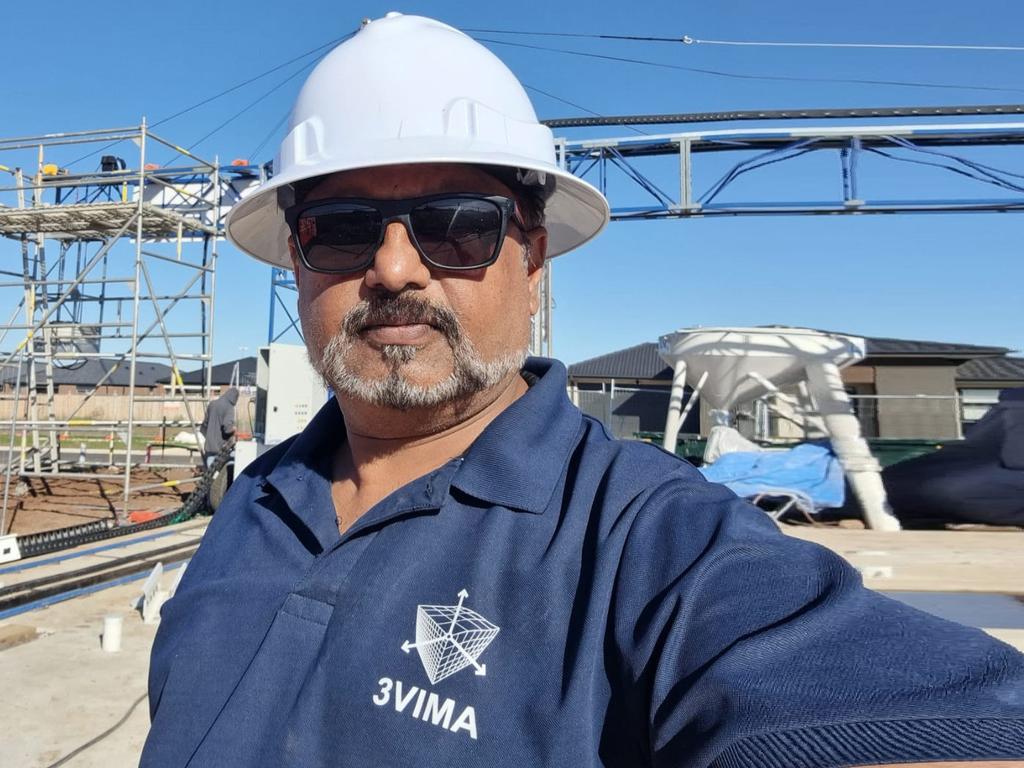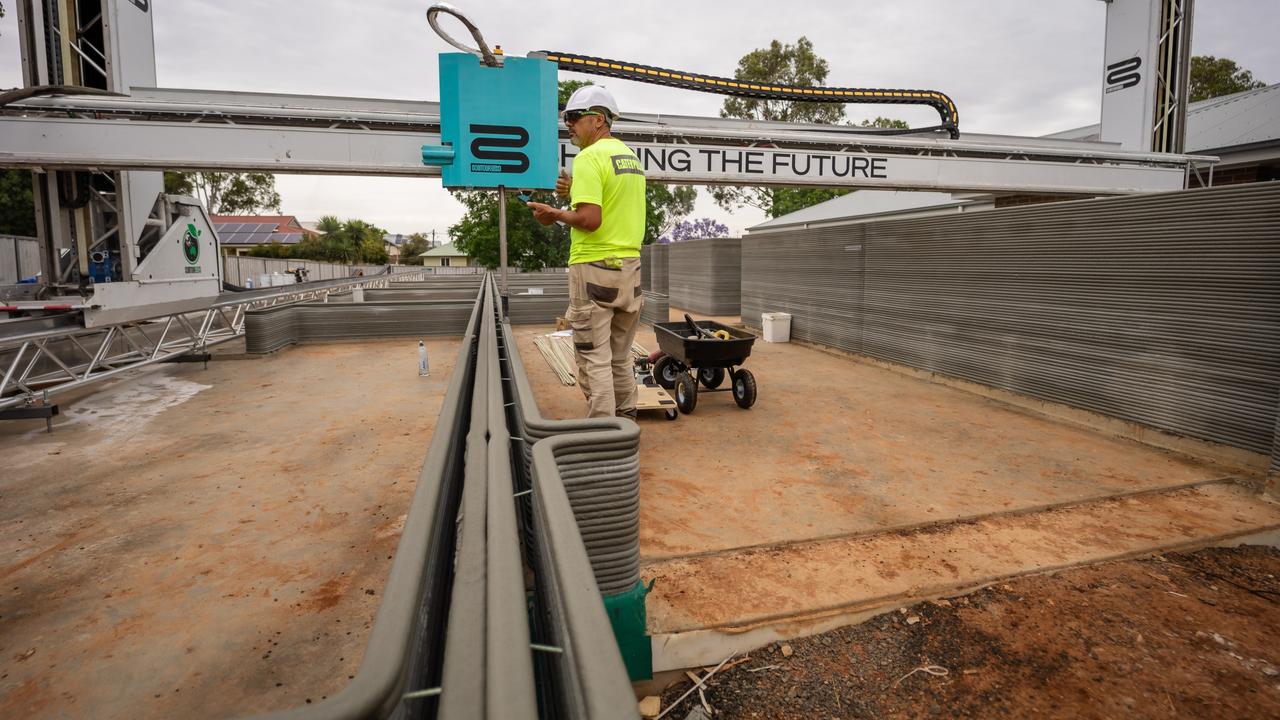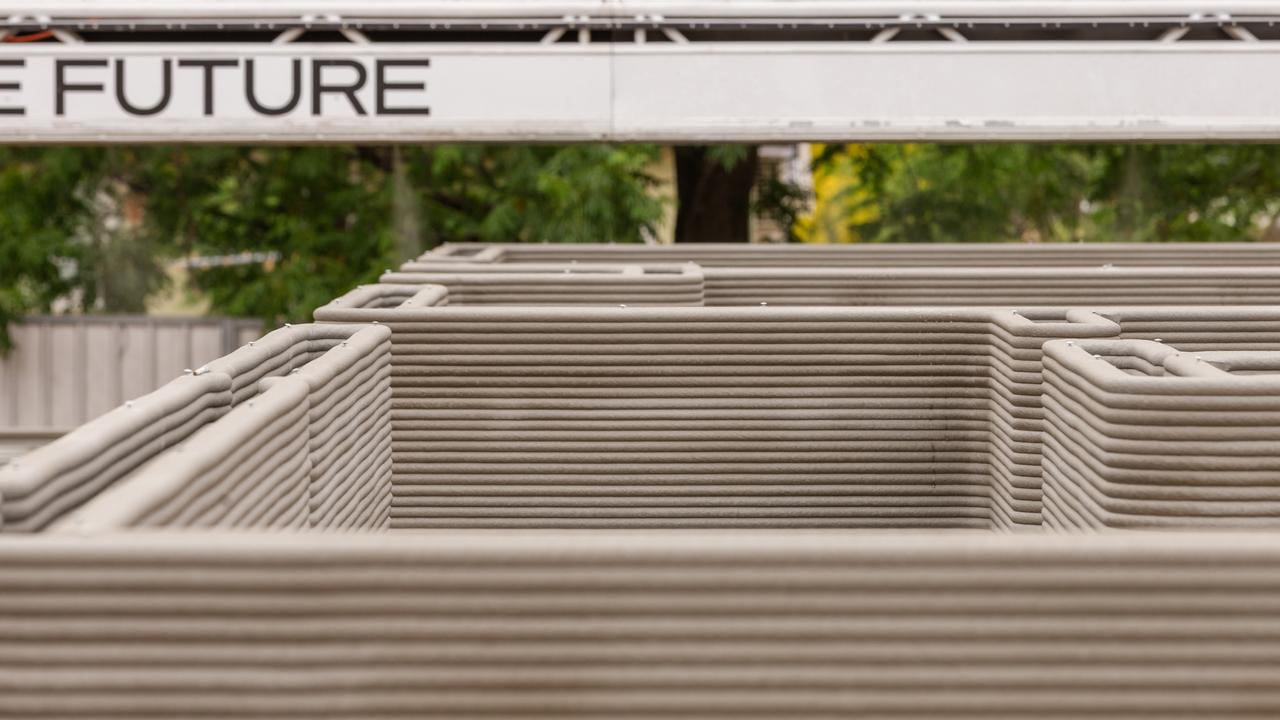3D printing technology can provide a six-week fix to help solve the housing crisis
New-age technology can create homes in just six weeks, with its backers saying it is the key to solving our housing crisis. And it has caught the attention of the NSW government.
NSW
Don't miss out on the headlines from NSW. Followed categories will be added to My News.
Homes built in just six weeks using revolutionary technology have emerged as a shock solution to the NSW housing crisis and earned the backing of the Minns Government.
A University of NSW professor and an entrepreneur from Sydney’s northwest have told The Sunday Telegraph how 3D concrete printers could transform the construction industry.
NSW Housing Minister Rose Jackson is also excited by an artificial intelligence option the government has adopted to build two duplexes on a vacant block in Dubbo as part of a social housing project.
“3D printed housing is a game changer,” she said.
“(It’s) an exciting innovation … faster to construct, cheaper to build, and more environmentally friendly than traditional construction methods. It can absolutely play a role in easing the housing crisis.”

Professor Hank Haeusler from UNSW has federal government funding for research into 3D printing.
“If you look at the productivity curve, construction has flatlined since the 1990s – nothing has changed,” he said.

“It’s still Bob the Builder putting bricks on top of each other and hammering things together.
“Compare that to software in manufacturing and where it has moved. Tesla can roll a car off the production line every 13 seconds.”
Jai Ranganathan, an award-winning entrepreneur from Dural, is building a two-storey house on the outskirts of Melbourne using an Australian-made 10m x 5m 3D printer worth almost $3m.
He is planning a “go to market” campaign in Sydney later this year for his company 3VIMA, promising to build freestanding three-bedroom, two-bathroom homes in six weeks once DA approvals are secured.
The state government duplexes at Dubbo are scheduled for completion late next month – a 16-week build from start to finish – while the time frame for traditional methods runs six to eight months.

“This robotic technology is the future of construction,” Mr Ranganathan said, adding that a single printer could potentially deliver almost 100 houses a year.
“It’s similar to how the motor industry evolved. It was all manual. The car shell was built by hand, cutting and welding, putting it together. Now 99 per cent of companies utilise robotics.”
The housing construction process involves the onsite deployment of a 3D concrete printer to create internal and external walls after the slab is poured and set.
The concrete printer is pre-programmed with the design of the house, including where doors, windows and electrical entry points are required.
Moving forward-back, left-right and up-down, the printer pours the concrete, leaving a cavity in each wall for electricals and plumbing, and creating a ribbed finish that can be retained or rendered.
“The printer makes no more noise than a vacuum cleaner,” Mr Ranganathan said.
“The walls structure for a three-bedroom, two-bathroom house would be done in 72 hours, even less if neighbours don’t object to running the printer around the clock.
“Once walls are done, the roofer comes in followed by floorer, carpenter, sparky and plumber. So a week for the slab and walls, four weeks for trades and a week for certification.”


Professor Haeusler said the federal government’s interest in the emerging technology was understandable.
“Government is trusting us that 3D printing is a technology worth researching and how that will play into building more houses,” he said.
“We have a housing crisis so severe it would be foolish to ignore new options.”
Professor Haeusler has grants from the Australian Research Centre and the Cooperative Research Centre Practice to fund a study into “3D printing of houses in remote environments using local materials”.
He said 3D printing could solve regional problems of high materials freight costs and a shortage of labour.
Mr Ranganathan said creative home designs, once unaffordable, were also possible with 3D printing.
“Under traditional methods, things like curved walls are difficult and time-consuming but, with AI technology, it’s no issue,” he said.
“You want a straight wall, robot says ‘yes’. You want a curved wall, robot says ‘yes’. And there is no extra time, no extra cost. It just comes down to programming the printer.”
The global 3D concrete printing market has been predicted to grow from $2.4bn in 2023 to more than $165bn by 2032.
Do you have a story for The Telegraph? Message 0481 056 618 or email tips@dailytelegraph.com.au
More Coverage
Originally published as 3D printing technology can provide a six-week fix to help solve the housing crisis








